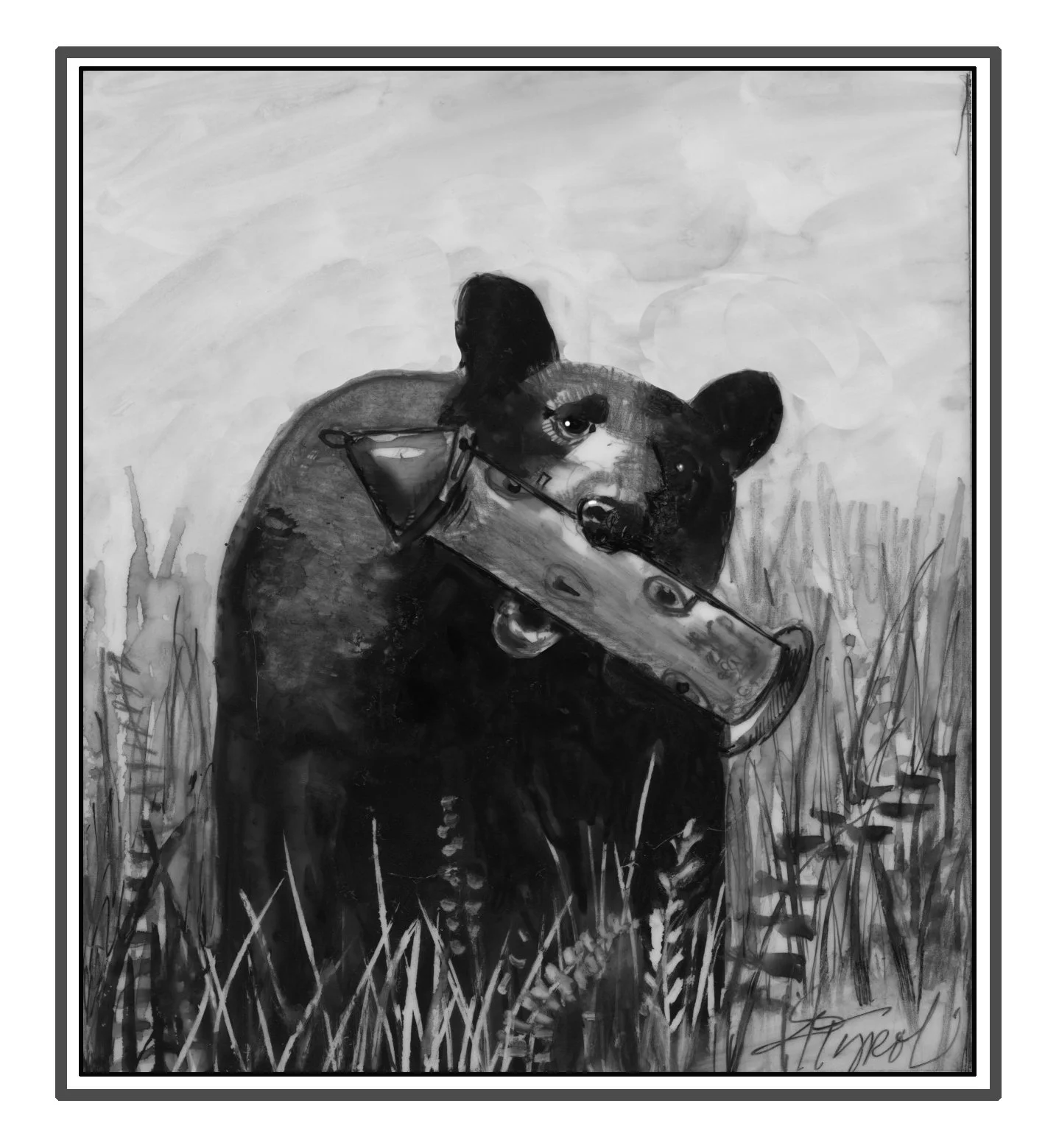The Outside Story: Birdfeeder season comes to a close
(And more ways to avoid bear conflicts)
March 31, 2023 | By Meghan McCarthy McPhaulIllustration by Adelaide Murphy Tyrol
It is a question I face each year as March winds into April: when to take down the bird feeder. Our avian feeding station is basic: a single run-of-the-mill hopper, which I fill with a local mix of seed that seems to keep the winter flocks of chickadees and nuthatches happy. Occasionally, a blue jay or two drops by. Sometimes a few crows or a couple of turkeys linger below the feeder, cleaning up whatever has fallen to the ground.
It’s always tempting to leave the feeder up just a bit longer, especially during this time of year when migratory birds are making their way back north. If the seed is there, perhaps those birds, still in their winter plumage, will pause in their travels. But as those birds move north, the bears who have spent the colder season hunkered down in the local woods are also emerging. And they are hungry.
“Spring is one of the leanest times for food,” said Andrew Timmins, Game Programs supervisor and acting Bear Project leader for the New Hampshire Fish & Game Department. “If the previous fall had a good beechnut or acorn crop, the bears feed on leftover hard mast once the snow has melted. But we had essentially none of that last fall, so the bears will be waiting for green vegetation to emerge.”
In the meantime – before the grasses green up and the new leaves form on poplar and white ash – bears will be searching for other food sources. And when humans provide those food sources, even inadvertently, that leads to trouble. That trouble usually ends badly for the bear.
You’ve likely heard the saying, “A fed bear is a dead bear,” and there’s a sad truth in that: bears that become habituated to sourcing their food from the human environment generally end up being killed, either by collisions with cars as the bears try to access human neighborhoods, by property owners who choose to shoot a bear rather than remove or protect the attractant, or by Fish & Game officials left with little choice.
“Once a bear starts breaking into houses or vehicles, it’s a pretty solid line in the sand. We can’t allow that behavior,” said Timmins. “But there’s a lot we can do to prevent that.”
He names three main factors driving bear-human conflicts: unsecured garbage, bird feeders, and unprotected chickens. Humans can, Timmins noted, address or correct each of these.
Garbage should be secured in a garage or outbuilding – or the basement if that’s the only option. Dumpsters should have locking metal tops to keep bears out. To control odors, add an old towel doused with ammonia to garbage receptacles. Pet food should also be secured, and barbecue grills cleaned regularly.
The best way to protect chickens is to keep them inside an electrified fence set at 4,000 to 5,000 volts. (And, for the record, bears aren’t the only wildlife that will readily dine on unprotected poultry; bobcats, foxes, coyotes, raccoons, skunks, weasels and others also get into chicken enclosures.) Fish & Game offers short term loans of electric fencing to homeowners – both to demonstrate its effectiveness and to allow people time to purchase their own fencing.
Among the simplest means of avoiding bear-human conflict is simply bringing in the bird feeders. For good. Until next winter.
“Feeding birds during the day and taking the feeder in at night never works,” said Timmins. “Bears will just figure out when it’s available and will start coming during the day. It’s also impossible to clean up all the spilled seed underneath that feeder; there will be enough remnants on the ground to attract a bear.”
Timmins encourages people to pack up their feeders by March 15 in the southern part of the state and April 1 farther north. I resisted the urge to buy one more package of bird seed and took my feeder down last week. While I’ll miss watching the birds gather to eat right outside my window, I know they’ll find wild food to sustain them – just, I hope, as the bears will this spring.
Meghan McCarthy McPhaul is the associate editor for Northern Woodlands. The Outside Story is assigned and edited by Northern Woodlands magazine and sponsored by the Wellborn Ecology Fund of the New Hampshire Charitable Foundation.
More tips on avoiding bear conflicts can be found on the Vermont Department of Fish and Wildlife website.

